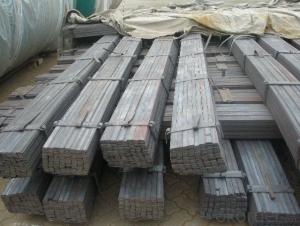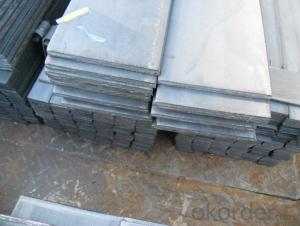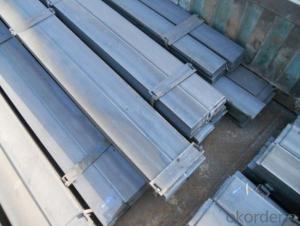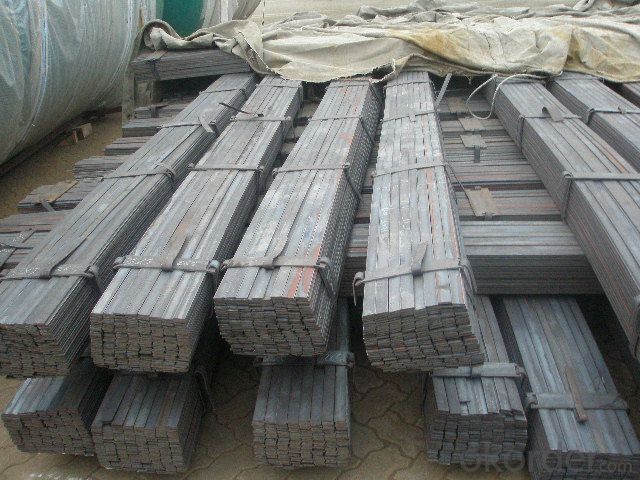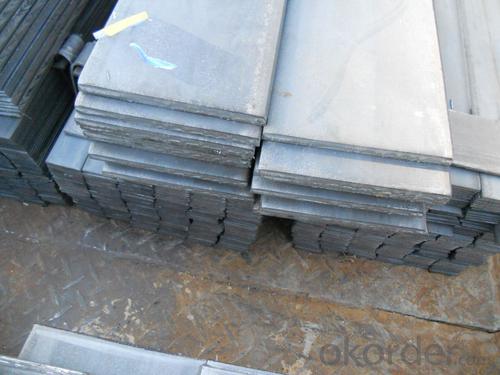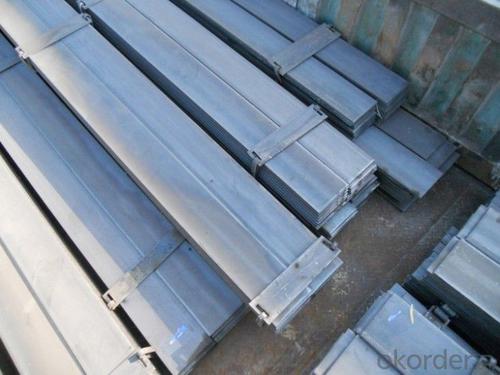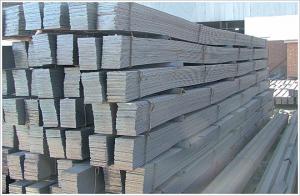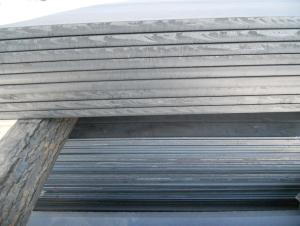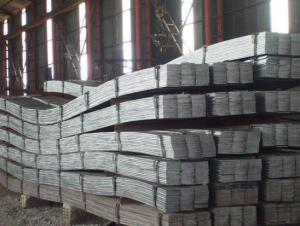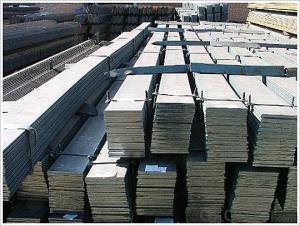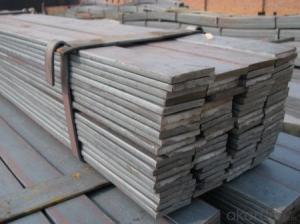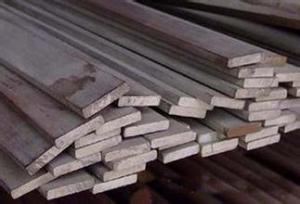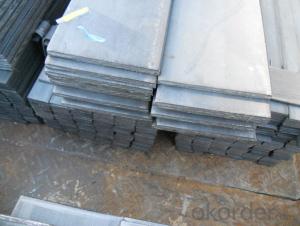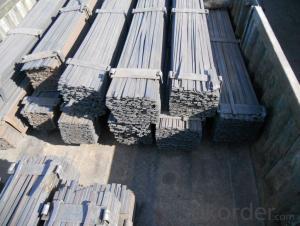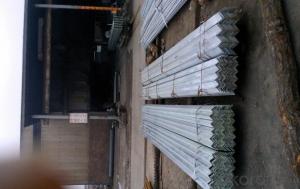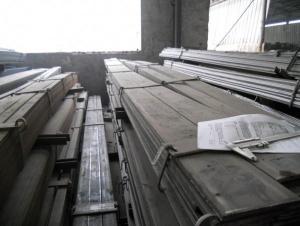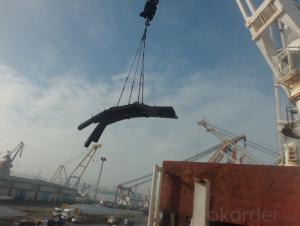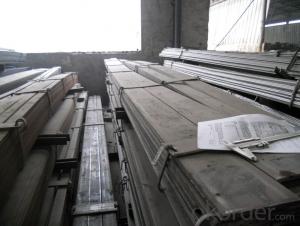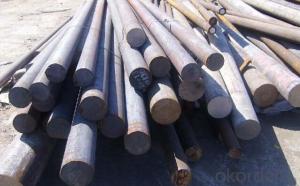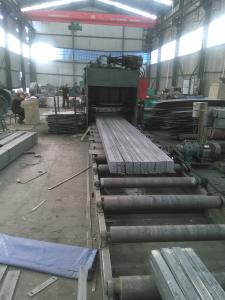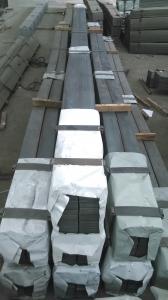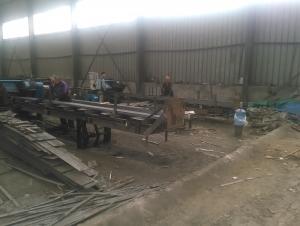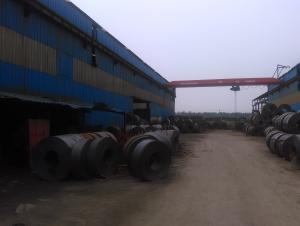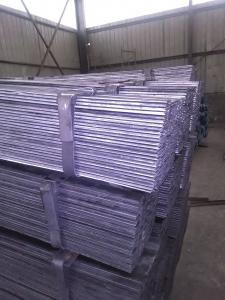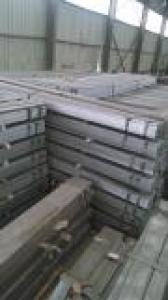Hot Rolled Steel Flat Bar with High Quality
- Loading Port:
- Tianjin
- Payment Terms:
- TT OR LC
- Min Order Qty:
- 25 m.t.
- Supply Capability:
- 10000 m.t./month
OKorder Service Pledge
OKorder Financial Service
You Might Also Like
Product Description:
OKorder is offering high quality Slit Cutting Flat Bar at great prices with worldwide shipping. Our supplier is a world-class manufacturer of steel, with our products utilized the world over. OKorder annually supplies products to European, North American and Asian markets. We provide quotations within 24 hours of receiving an inquiry and guarantee competitive prices.
Product Applications:
Slit Cutting Flat Bars are ideal for structural applications and are widely used in the construction of buildings and bridges, and the manufacturing, petrochemical, and transportation industries.
Product Advantages:
OKorder's Slit Cutting Flats Barare durable, strong, and resist corrosion.
Main Product Features:
· Premium quality
· Prompt delivery & seaworthy packing (30 days after receiving deposit)
· Corrosion resistance
· Can be recycled and reused
· Mill test certification
· Professional Service
· Competitive pricing
Product Specifications:
Manufacture: Slit Cutting
Grade: Q195 – 235
Certificates: ISO, SGS, BV, CIQ
Length: 6m – 12m, as per customer request
Packaging: Export packing, nude packing, bundled
Chemical composition of Q235
Alloy No | Grade | Element(%) | ||||
C
| Mn
| S
| P
| Si
| ||
Q235
|
B
|
0.12—0.20 |
0.3—0.7 |
≤0.045 |
≤0.045
|
≤0.3
|
Physical properties of Q235
Alloy No | Grade | Yielding strength point(Mpa) | Tensile strength (Mpa) | Elongation after fracture(%) | ||||||
Thickness (mm) | Thickness (mm) | |||||||||
≤16 | >16--40 | >40--60 | >60--100 | ≤16 | >16--40 | >40--60 | >60--100 | |||
≥ | ≥ | |||||||||
Q235 |
B |
235 |
225 |
215 |
205 |
375--500 |
26 |
25 |
24 |
23 |
FAQ:
Q1: How soon can we receive the product after purchase?
A1: Within three days of placing an order, we will begin production. The specific shipping date is dependent upon international and government factors, but is typically 7 to 10 workdays.
Q2: How do we guarantee the quality of our products?
A2: We have established an advanced quality management system which conducts strict quality tests at every step, from raw materials to the final product. At the same time, we provide extensive follow-up service assurances as required.
Q3: The products are invoicing on theoritical weight or on actual weight?
A3: We can do it in both manners, it 's according to the customers' requirement.
Images:
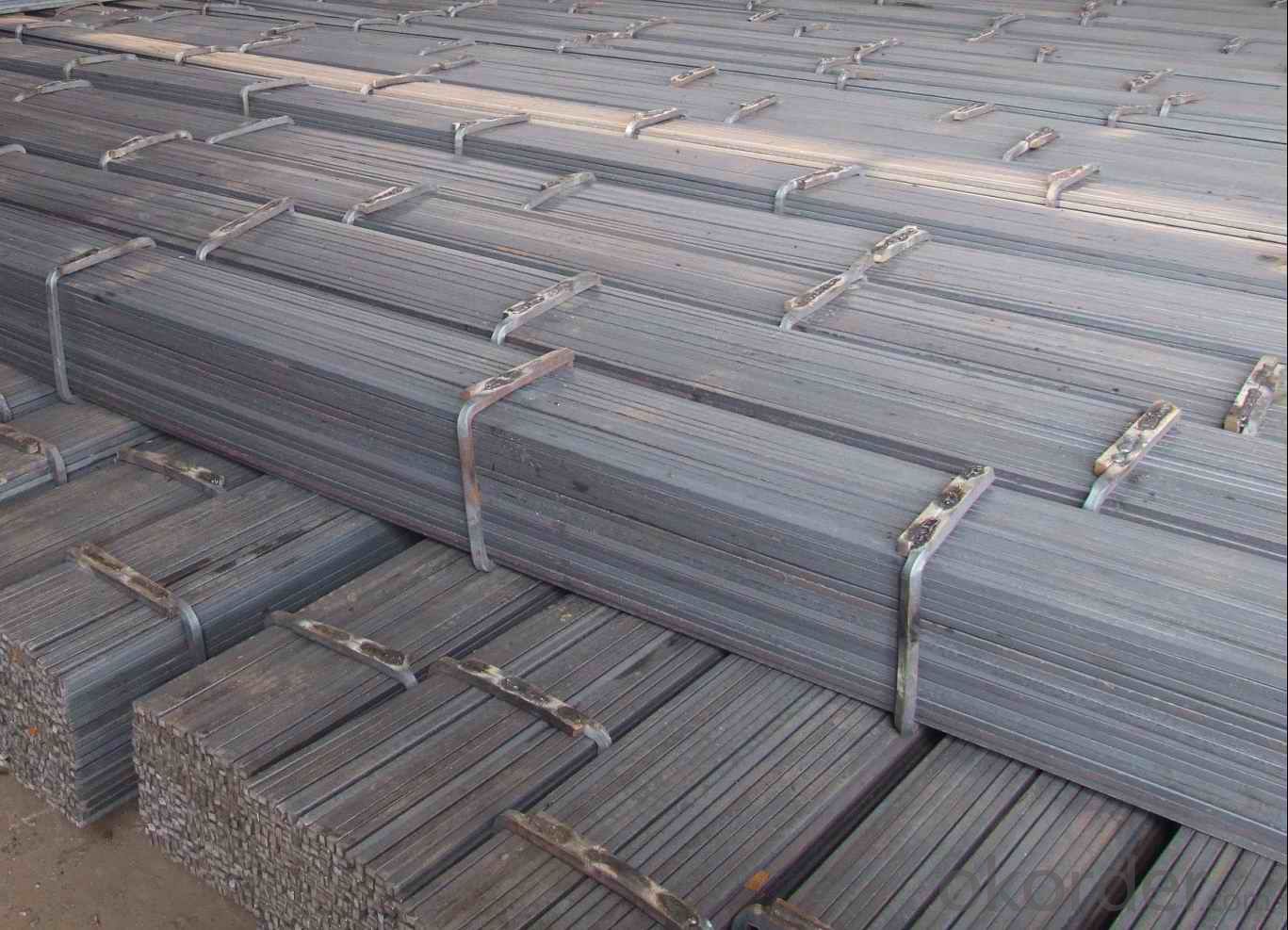
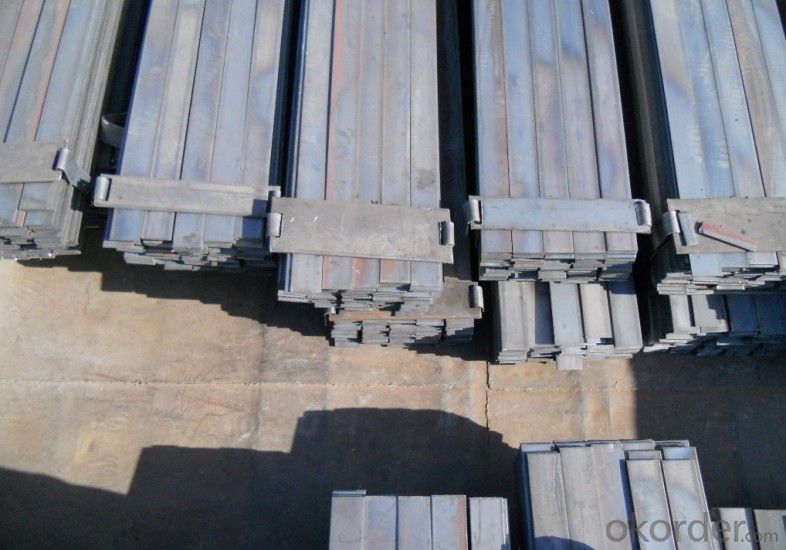
- Q: Can steel flat bars be used for making brackets or supports for transportation infrastructure?
- Yes, steel flat bars can be commonly used for making brackets or supports for transportation infrastructure due to their strength, durability, and ability to withstand heavy loads.
- Q: What about the installation height of the socket and the height of the ground flat steel?
- If the construction unit, design institute and contact Party A drawings or design change
- Q: Can steel flat bars be used for making cutting tools?
- Depending on the specific application and the type of steel used, steel flat bars can be utilized in the creation of cutting tools. Steel, being a versatile material, can be hardened and tempered to different levels, making it suitable for a variety of cutting tasks. Nevertheless, it is crucial to select the appropriate type of steel for the desired cutting tool. High-carbon steels, including tool steel or carbon steel, are often the preferred choice as they possess exceptional hardness and resistance to wear. Furthermore, the flat shape of steel bars allows for easy shaping and grinding, enabling the creation of various cutting tool designs like chisels or knives. Proper heat treatment is essential to achieve the desired hardness and toughness in the steel, ensuring optimal performance and long-lasting sharpness of the cutting tool.
- Q: Can steel flat bars be used for making hand tools?
- Indeed, the utilization of steel flat bars is applicable in the creation of hand tools. These bars possess remarkable versatility and durability, rendering them well-suited for diverse applications, specifically in the manufacturing of hand tools. The steel employed in the construction of flat bars typically boasts exceptional strength and resistance to deterioration, making it an ideal material for tools demanding robustness and longevity. Moreover, the malleability and manipulability of steel flat bars enable them to be effortlessly shaped and crafted into various tool designs, thereby facilitating customization and flexibility in the manufacturing process. Consequently, the effective incorporation of steel flat bars in hand tool production guarantees both their longevity and functionality.
- Q: How are steel flat bars used in the fabrication of furniture?
- Steel flat bars are commonly used in the fabrication of furniture as they provide structural support and stability. They are often used as frames or legs for tables, chairs, and other furniture pieces, offering durability and strength. Additionally, steel flat bars can be shaped and welded to create intricate designs and patterns, enhancing the aesthetics of the furniture.
- Q: Can steel flat bars be used as structural support in buildings?
- Steel flat bars can indeed serve as structural support in buildings. They are widely employed in construction owing to their impressive strength and longevity. Their versatility allows them to be utilized in beams, columns, and braces, among other applications. With their exceptional load-bearing capacity, steel flat bars can withstand substantial burdens, making them ideal for building structures. Furthermore, their consistent shape and size facilitate easy integration into construction projects. All in all, steel flat bars are a dependable option for delivering structural support in buildings.
- Q: Can steel flat bars be used for making power tools?
- Power tools can definitely be made using steel flat bars. Steel, known for its robustness and endurance, is frequently employed in the production of power tools due to its strength and capacity to endure high temperatures and heavy loads. The flatness of the bars permits effortless shaping and cutting, rendering them appropriate for various power tool parts, including blades, handles, and frames. Furthermore, steel flat bars can undergo additional processing techniques like heat treatment or coating to enhance their performance and resistance against wear and corrosion. In conclusion, steel flat bars are a versatile material that can be effectively employed in the manufacturing of power tools.
- Q: Can steel flat bars be used in the construction of bridges?
- Yes, steel flat bars can be used in the construction of bridges. Steel flat bars are commonly used in bridge construction as they provide strength, durability, and stability. They are often utilized in the fabrication of bridge components such as beams, trusses, and supports. Additionally, steel flat bars can be easily welded, making them versatile and suitable for various bridge designs and construction requirements.
- Q: What are the maximum allowable spans for steel flat bars?
- The maximum spans that steel flat bars can have are subject to variation based on a range of factors, including the applied load, steel type, and intended use. Typically, the determination of the maximum span for steel flat bars involves consideration of deflection, bending stress, and safety factors. For lighter applications and smaller loads, steel flat bars may have maximum spans ranging from a few feet to several feet. However, in the case of heavier loads and structural applications, the maximum allowable spans could be significantly reduced to ensure structural integrity and prevent excessive deflection. Engineers and designers employ various calculations and design codes, such as the American Institute of Steel Construction (AISC) standards, to establish the maximum allowable span for steel flat bars. These standards outline guidelines for maximum allowable stress, deflection limits, and safety factors that should be taken into account during the determination of the span. To ascertain the specific maximum allowable spans for steel flat bars, it is crucial to consult a structural engineer or refer to relevant design codes and standards that align with the particular application and load requirements.
- Q: What are the different methods of surface protection for steel flat bars in corrosive environments?
- There are several methods of surface protection for steel flat bars in corrosive environments. Some of the commonly used methods include: 1. Galvanization: This process involves coating the steel flat bars with a layer of zinc. The zinc acts as a sacrificial anode, protecting the steel from corrosion. Galvanization can be done through hot-dip galvanizing, where the bars are immersed in a bath of molten zinc, or through electroplating, which involves the application of zinc using an electric current. 2. Powder coating: Powder coating involves applying a dry powder onto the surface of the steel flat bars. The powder is then heated and cured, forming a protective layer. Powder coating provides excellent corrosion resistance and can be customized in terms of color and finish. 3. Paint or epoxy coating: Applying a layer of paint or epoxy coating can effectively protect steel flat bars from corrosion. These coatings act as a barrier between the metal and the corrosive environment, preventing moisture and chemicals from reaching the surface of the steel. 4. Stainless steel cladding: In this method, a layer of stainless steel is bonded to the surface of the steel flat bars. Stainless steel is highly resistant to corrosion, making it an effective protective layer against corrosive environments. 5. Organic coatings: Organic coatings, such as polyurethane or acrylic coatings, can be applied to steel flat bars to provide corrosion protection. These coatings create a barrier that prevents moisture and corrosive agents from reaching the steel surface. 6. Metal plating: Steel flat bars can be plated with metals such as nickel or chrome to enhance their corrosion resistance. The plating process involves immersing the bars in a solution containing the metal ions, which then adhere to the surface of the steel. It is important to consider the specific requirements of the corrosive environment and the expected lifespan of the steel flat bars when selecting a surface protection method. Each method has its own advantages and limitations, so choosing the most suitable option will depend on factors such as cost, durability, and the severity of the corrosive environment.
Send your message to us
Hot Rolled Steel Flat Bar with High Quality
- Loading Port:
- Tianjin
- Payment Terms:
- TT OR LC
- Min Order Qty:
- 25 m.t.
- Supply Capability:
- 10000 m.t./month
OKorder Service Pledge
OKorder Financial Service
Similar products
Hot products
Hot Searches
Related keywords
